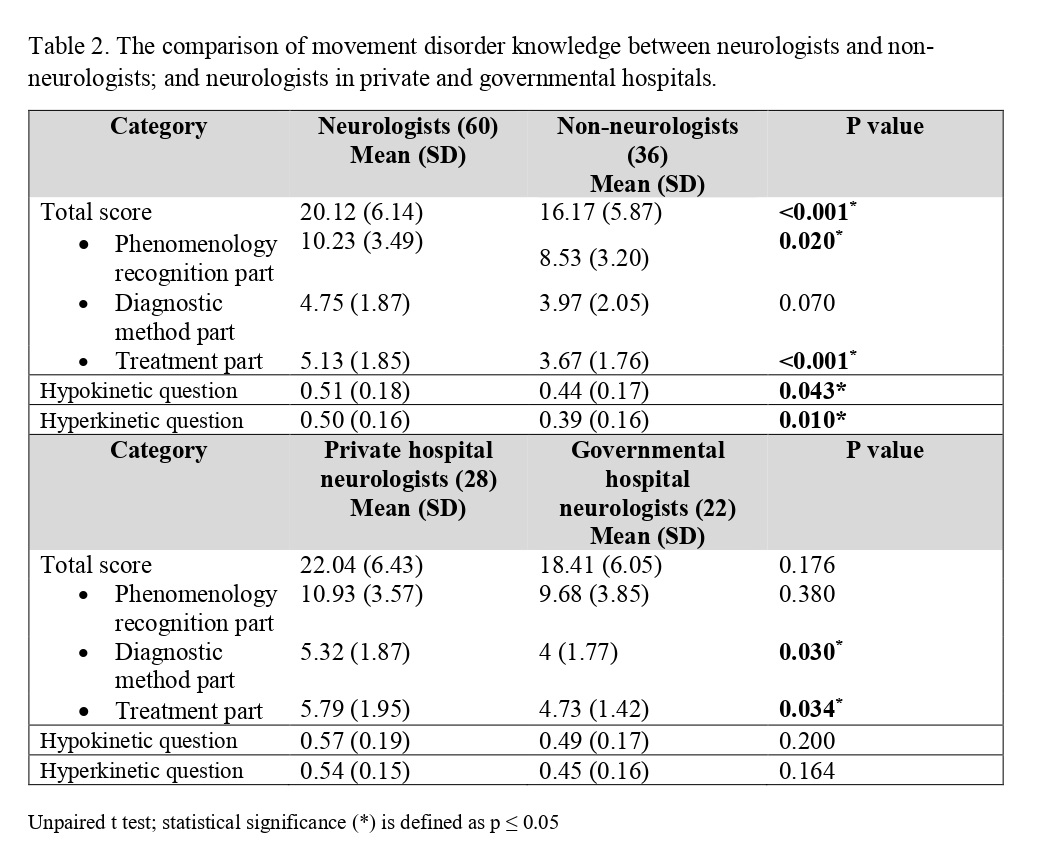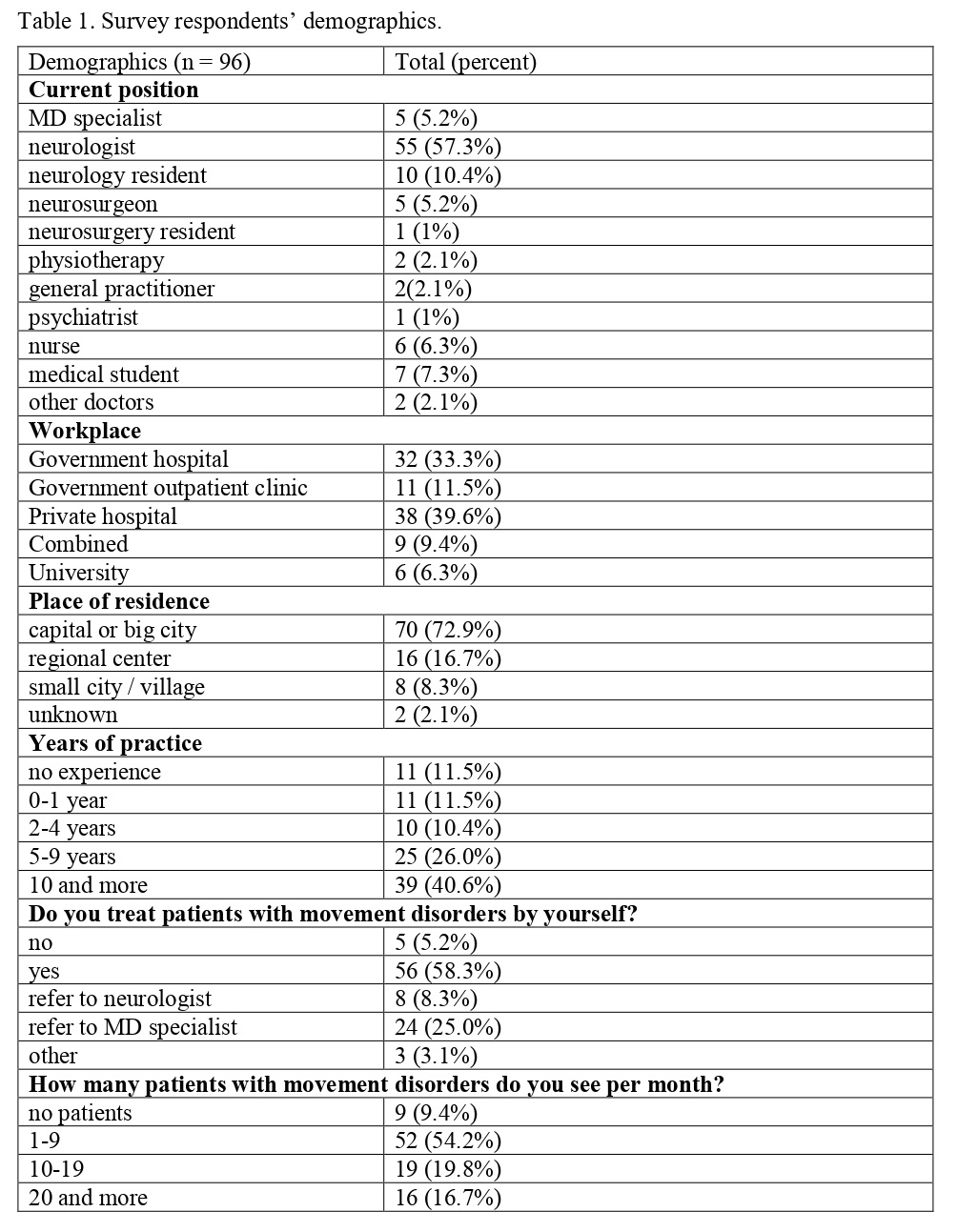Category: Education in Movement Disorders
Objective: To evaluate and recognize the knowledge of movement disorders among medical professionals in Central Asia.
Background: The field of movement disorders encompasses a diverse range of neurological conditions characterized by abnormalities in voluntary movements which significantly impact patients’ quality of life and pose diagnostic and management challenges for healthcare professionals [1]. Central Asia, comprising countries such as Kazakhstan, Uzbekistan, Kyrgyzstan, Tajikistan, and Turkmenistan, represents a region with unique healthcare dynamics and challenges. However, there remains a lack of research focusing on the diagnosis and management of these conditions in Central Asia.
Method: The authors developed and performed the content validation of an online questionnaire focusing on the understanding of common movement disorders. The questionnaire comprises 40 questions categorized into 3 sections: phenomenology recognition (20 questions), diagnostic signs (10 questions), treatment options (10 questions). The questionnaire was distributed to medical staff in Central Asia using social media platforms. The data were analyzed using an unpaired t-test. After the survey period we organized an online course of fundamental knowledge in movement disorders for participants.
Results: Demographic data
Nighty-six responders were recruited (80 from Kazakhstan, 16 from Kyrgyzstan). Among them 60 responders had prior neurological experience, and 36 didn’t. Neurologists were further categorized into 2 groups based on their practice setting: those practicing in private and governmental hospitals. Other demographic data was shown in Table 1.
Questionnaires results
The mean score of phenomenology recognition was 9.59±3.47, the diagnostic methods knowledge was 4.46±1.96, and treatment knowledge was 4.58±1.94. The mean of the total score was 18.64±6.31. Private clinic neurologists answered more correctly in diagnostic methods and disease treatment questions, which was significantly proved(p-value<0.05). There are no significant differences in knowledge between hypo- and hyperkinetic syndromes among governmental and private hospital doctors. The other results of the questionnaire were shown in Table 2.
Conclusion: This study demonstrated a gap of knowledge of movement disorders among medical professionals in Central Asia. We suggest that regular movement disorders curriculum and courses will help to improve movement disorders knowledge among them.
Table 1
Table 2
References: 1.GBD 2019 Diseases and Injuries Collaborators. Global burden of 369 diseases and injuries in 204 countries and territories, 1990-2019: a systematic analysis for the Global Burden of Disease Study 2019 [published correction appears in Lancet. 2020 Nov 14;396(10262):1562]. Lancet. 2020;396(10258):1204-1222. doi:10.1016/S0140-6736(20)30925-9
To cite this abstract in AMA style:
ZH. Myrzayev, J. Sringean, R. Bhidayasiri. Movement Disorders Knowledge Among Medical Professionals in Central Asia [abstract]. Mov Disord. 2024; 39 (suppl 1). https://www.mdsabstracts.org/abstract/movement-disorders-knowledge-among-medical-professionals-in-central-asia/. Accessed December 12, 2025.« Back to 2024 International Congress
MDS Abstracts - https://www.mdsabstracts.org/abstract/movement-disorders-knowledge-among-medical-professionals-in-central-asia/


